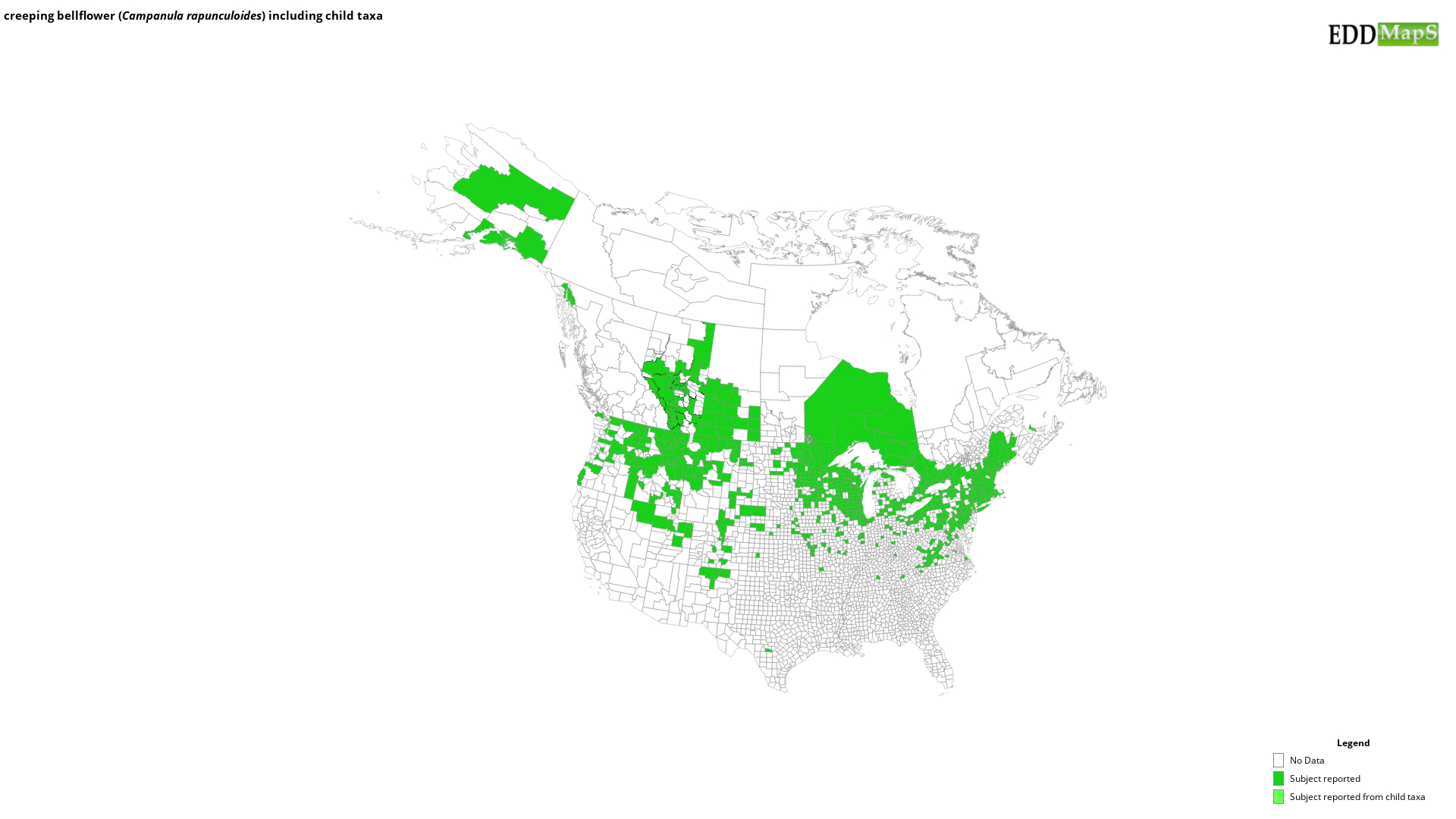creeping bellflower
(Campanula rapunculoides)
This species is Introduced in the United States
Appearance
Campanula rapunculoides is an herbaceous perennial that is 1-3 in (cm) tall. The stems are smooth to slightly hairy and contain a milky liquid. It has rhizomes which help it to spread. It is native to Europe and temperate Asia. It is has escaped cultivation and naturalized in Australia, New Zealand, North America and South America.
Foliage
The rough, serrate leaves are alternate with hairs on the underside. Basal leaves are heart-shaped and 1-3 in (cm) long with long petioles. Upper leaves are narrow, lance-shaped and with little to no petiole. Leaves are reduced to bracts in inflorescence.
Flowers
The blue to blue-violet flowers are arranged in a long raceme. Individual flowers are about 1 in (cm) long and bell-shaped with five pointed lobes.
Fruit
It is a prolific seed producer with as many as 15,000 seeds per plant.
Ecological Threat
C. rapunculoides is seen invading fields, stream banks, woodlands, woodland edges, prairies, roadsides, urban areas, and oak savannas. It is weedy and aggressive, creating monoculture stands through high seed production and multiple rhizomes. It is very similar in appearance to several native Campanula species such as Harebell, Campanula rotundifolia. Some native violets have leaves which are so similar that it is a good idea to wait for the flowers to emerge, before identifying the C. rapunculoides for removal.
Selected Images
Maps
EDDMapS Distribution - This map is incomplete and is based only on current site and county level reports made by experts, herbaria, and literature. For more information, visit www.eddmaps.org
State Lists - This map identifies those states that have this species on their invasive species list or law.
Invasive Listing Sources
Taxonomic Rank
| Domain: Eukarya |
| Kingdom: Plantae |
| Phylum: Magnoliophyta |
| Class: Magnoliopsida |
| Superorder: Asteranae |
| Order: Asterales |
| Family: Campanulaceae |
| Genus: Campanula |
| Campanula rapunculoides |
Other System Links
Plants: CARA
Bayer: CMPRA
GRIN: 316600
ITIS: 34494
NPDN Pest: PAUABBA
NPDN Host: 36337
References
Common Name Reference: Weed Science Society of America Common Names List
Scientific Name Reference: USDA, NRCS. 2010. The PLANTS Database. National Plant Data Center, Baton Rouge, LA, USA.


